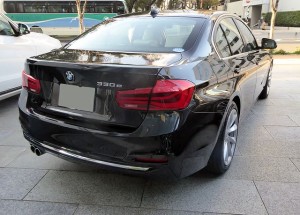 One of the key advantages of plug-in hybrids is that charging the battery allows one to travel for a long distance without emissions. Currently, plug-in hybrid vehicles are eligible for federal tax credits, as well as subsidies. Hence, the government covers part of the car’s purchasing cost. Despite the mentioned advantages, plug-in hybrids cost more than the regular hybrid cars. The cost increase is because of its higher and more powerful capacity, as well as an advanced battery. There is also additional equipment necessary for charging the vehicle from the main. The manufacturing costs may also be higher compared to those of a standard hybrid car. Basically, the additional complexity and technology of plug-in hybrid cars make them more costly in comparison to regular hybrids.
One of the key advantages of plug-in hybrids is that charging the battery allows one to travel for a long distance without emissions. Currently, plug-in hybrid vehicles are eligible for federal tax credits, as well as subsidies. Hence, the government covers part of the car’s purchasing cost. Despite the mentioned advantages, plug-in hybrids cost more than the regular hybrid cars. The cost increase is because of its higher and more powerful capacity, as well as an advanced battery. There is also additional equipment necessary for charging the vehicle from the main. The manufacturing costs may also be higher compared to those of a standard hybrid car. Basically, the additional complexity and technology of plug-in hybrid cars make them more costly in comparison to regular hybrids.
It is essential to keep in mind that for you to use hybrid plug-ins facilities, you have to access parking that is close to a fast-charger or mains supply. Daytime or overnight charging may be tricky for those who find it hard to park outside their offices or homes. Another difference between the two forms of vehicles is in terms of range. Customers need to be aware of the distance that plug-in hybrid cars can cover before choosing to purchase one. The electric range differs from one vehicle to another. However, by charging your car during the day or overnight, you can be sure of driving further compared to regular hybrid cars.
As an example, BMW 330e plug-in car’s electric range is approximately 25 miles, which is sufficient to cover most morning commutes. In the higher-speed portions of the journey, the petrol engine is available to boost the battery. Low emissions are especially valued in situations such as congested areas or traffic jams, where only electric power will be used for driving. The Toyota Prius is a perfect example to illustrate the difference between a plug-in and a regular hybrid. The all-electric range of the standard Prius hybrid is 0.6 miles, which does not sound a lot. However, this car is mainly used to make low-speed journeys where traffic is heavy. The electric motor of this car is used nearly 70 percent of the entire driving time.
Toyota introduced the Prius plug-in hybrid with the sole intention of further reducing vehicles’ dependence on the petrol engine. This plug-in hybrid’s range is 15 miles with a facility to allow charging of the battery pack. The charging process takes approximately 90 minutes. The 2017 version of the plug-in hybrid will even have an extended electric range of 31 miles.